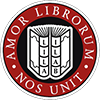

| Non hai nessun prodotto nel carrelloCHIUDI X |
Fortunato Depero
Libro imbullonato [Bolted book]
Milano - Parigi, Edizione della Dinamo (in fine: Stampato nella Tipografia della Dinamo: «Mercurio» - Rovereto), [1927-1928], oblong 8vo (245 x 320 mm), illustrated cardboards bound with bolts (no spine), pp. [246], many of them plates.
A copy with a double inscription of Depero's most important book.
Commonly known as “the bolted book”, this book-object is one of the greatest masterpieces of international avant-gardes.
Depero, an artist and graphic designer, worked with Azari (the publisher) on the size of the book, creating an object that measured three times a traditional oblong catalogue; the screws became bolts, the same used by millwrights in their trade, and the arts were officially challenged to create a “libro macchina” (“machine-book”).
Just like a commercial catalogue, the bolted book is essentially Depero’s portfolio for 1927-28, sampling his work along with organigrams and official futurist programmes.
The book as a whole is conceived as a single piece of graphical experimentation: the bolts binding the book, its typographical composition, its leaves in different colours and grammage (to name a few) are features that make this one of the most important books of the 1920s.
Depero’s graphic words-in-freedom tableaux hit their peak here: the texts are geometrical (one folding table in particular is remarkable: the text is arranged to create the word DEPERO in page-sized letters) and use every orthogonal axis the layout can offer, including capsized and mirrored words, an often felicitous ensemble of clichés and lettering.
The first copies of the bolted book were ready in September-October 1927. The printing works staff, the artist and the publisher worked tirelessly: the numerous fonts and the book’s sheer size required separate print runs of specific sections of the book (every copy of which had to be assembled by hand). According to leaf 3 verso (title page in black and white), 1000 copies were printed in total: all were numbered, signed and dated by the artist; printing carried on into 1928, which is why some copies bear this date.
There are a number of printing variants: the title page can be blue and orange, blue and gold or red and silver; only three copies with the upper board in metal and bolts in steel are officially known.
Libreria Antiquaria Pontremoli P.IVA 10060360962 | © 2024 Web & Com ® | Area riservata

 MENU
MENU![Libro imbullonato [Bolted book]](../img/vetrina/vetrina212472375.jpg)




